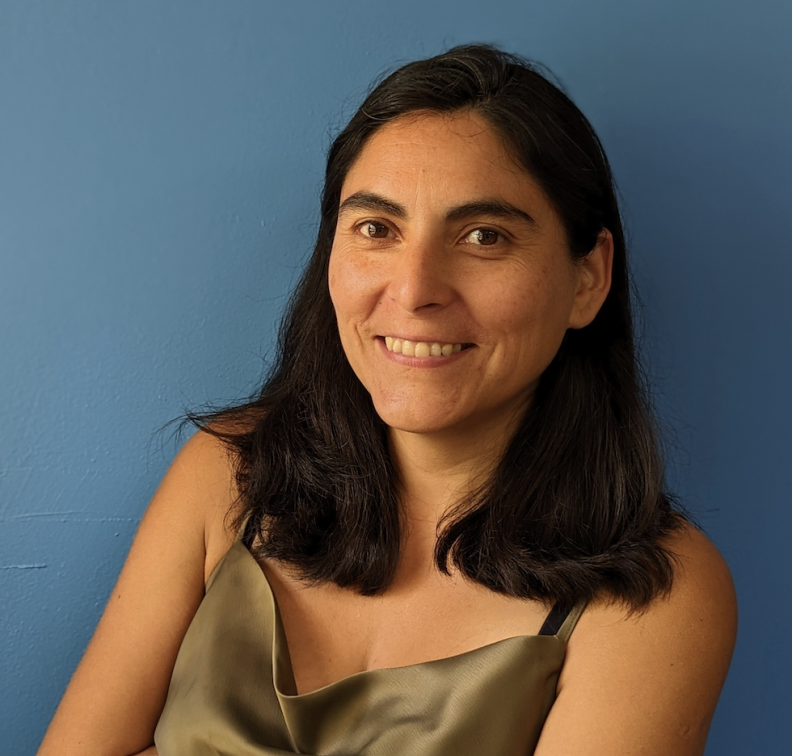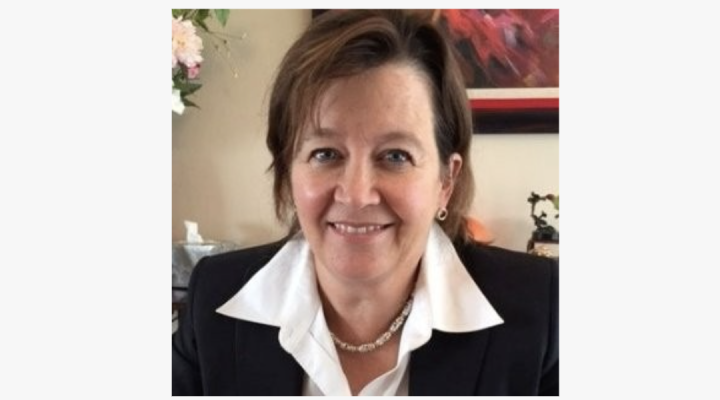Growing up in Chile, new EAS Assistant Professor Carolina Muñoz‐Saez lived with a sharp awareness of volcanoes and earthquakes. Her grandmother had a cabin near an active volcano in the south of Chile and Muñoz‐Saez remembers hearing it rumble and seeing the orange glow of lava at night. “I used to hope that I would get to see the volcano erupt,” Muñoz‐Saez said. “But the rest of my family were all freaking out—they did not want to be there for an eruption.”
In 1985, when Muñoz‐Saez was four years old, Chile experienced an earthquake centered near Valparaiso. “Everyone was running around scared, but I can still remember also being excited,”Muñoz‐Saez said.
So there is little surprise that Muñoz‐Saez went on to earn a B.S. and a master’s in geosciences from the University of Chile. Master’s degree in hand, she went to work as an exploration geologist where she conducted preliminary surface field exploration, sample collection, petrological and alteration mineral description, and geochemical analysis of anomalies in the Andes region of Central Chile. She also supervised exploratory drilling and logged cores.
“We were doing fieldwork near Aconcagua riding horses, and there were condors and petroglyphs and these amazing mountains all around,” Muñoz‐Saez said. “I loved it and it helped me see that I did not want to move into an office job. Those experiences made it clear that I wanted to keep learning and to get my Ph.D.”
Muñoz‐Saez came to the United States in 2010 and started a Ph.D. program in Geosciences at the University of California, Berkeley with Professor Michael Manga as her advisor. While at Berkeley she set-up, measured, analyzed and modelled large geophysical time series of geyser eruptions from field and laboratory datasets, designed and implemented interdisciplinary field expeditions in Chile, the US, Yellowstone and Iceland, and started teaching.
At Berkeley, Muñoz‐Saez got to learn from a valuable mentor and was also able to go back to her beloved Andes to study geysers in the Altiplano. During the six years of her doctoral studies Muñoz‐Saez was studying eruption processes in geyser systems. After earning her degree, she worked as a postdoctoral researcher at the University of Chile and then as a researcher at Columbia University and the City University of New York. Her postdoctoral experience in Chile allowed Muñoz‐Saez to deepen her knowledge of geochemistry and the transportation and accumulation of metals and minerals through geothermal processes. She has published more than 20 academic papers based on her work in the Atacama, Yellowstone, and Iceland.
In 2021 Muñoz‐Saez joined the faculty of the University of Nevada, Reno and in January of 2023 she moved to Cornell as an assistant professor in the Department of Earth and Atmospheric Sciences. “When I saw that Cornell was looking for someone who knew something about critical metals, it caught my attention,” Muñoz‐Saez said. “And when I came to interview it felt like such a collaborative and energetic group. It was easy to accept their offer. In fact, I was working on two proposals with other faculty before I even officially got here.”
At Cornell Muñoz‐Saez will have several lines of active research. She plans to study lithium that is embedded in clays rather than in brine, where lithium is more commonly found. Lithium found in brines is usually the result of groundwater circulation, but lithium found in high-temperature clays suggest geothermal processes. Little is known about how and why this happens and Muñoz‐Saez aims to do experimental work in her lab to build a model of what is going on.
Another interest Muñoz‐Saez will pursue is creating a new method for determining the age of geothermal deposits. The current method uses uranium to date deposits, but it is only useful to a limit of 50,000 years in the past. Scientists would like a reliable method for finding the age of hydrothermal deposits that might go back millions of years. To do that, Muñoz‐Saez is working on a dating system that would be based on opals and their transition to microcrystalline quartz.
A third thread in Muñoz‐Saez’s research is an ongoing NSF-funded project in collaboration with some researchers from Columbia’s Lamont-Doherty Earth Observatory. The group is trying to understand how geothermal systems will react to changes in climate. As glaciers melt and glacial runoff increases and glacial mass decreases, it is unclear what will happen to geothermal reservoirs. It is also possible that climate change will affect volcanism as the pressure of weighty glaciers is removed from areas of Patagonia and Iceland and elsewhere that have magma close to the surface.
Another idea Muñoz‐Saez is investigating involves rocks around hot springs in Mars analogs on Earth, where she is trying to understand geochemical traces of ancient biological material incorporated into the “ingredients” that comprise the rock. She is applying for a grant through NASA’s Habitable Worlds program to incorporate astrobiology into her lab at Cornell.
Many of these projects require the expertise of other researchers and Muñoz‐Saez says this is why Cornell EAS is the perfect place for her. “The collaborative environment at Cornell—inside the department and across departments and colleges—is perfect for me,” Muñoz‐Saez said. “Coming to Cornell allows me so much freedom to follow my curiosity.”





